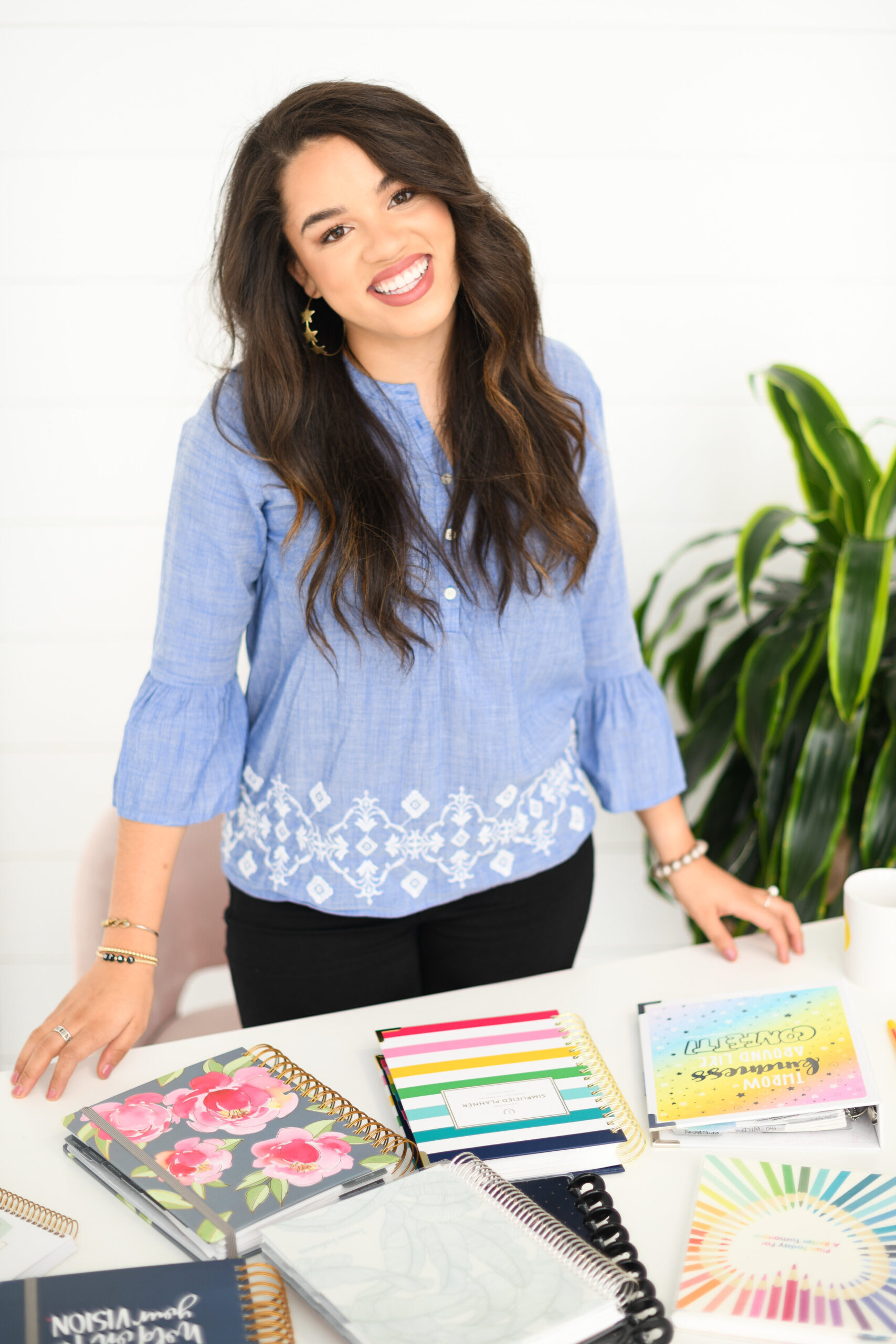How to use multiple planners

Why would anyone use more than one planner to plan their life?
I completely understand the sentiment behind this question. It’s a question I first asked myself when I found the planner community on Facebook and Instagram. I saw planner influencers posting about their ‘stack’ and ‘lineup’, swiping through the carousel of photos and seeing seven (or more) distinct planner brands and spreads represented, and sometimes more – It was overwhelming to say the least! Back when I started to use a planner I only ever used one. I was oblivious to the wider world of planner companies and brands. I followed the lead of others and started buying more planners. My planner stack ballooned to more than 10 planners in short order. I was, as you might expect, completely over my head!
So here’s what I have learned about using multiple planners:
You don’t have to use multiple planners.

But seriously, I want to debunk the myth that buying more planners will give you more happiness or more control over your life. Ironically, I found that buying more planners gave me less control over my life – I felt I owed it to myself to use my beautiful wellness planner to track my workouts, my two goal-setting planners to separately chart my personal and work-related goals, and so on. After all, I’d spent $30 or more on each, hadn’t I? Economists call this trap the sunk cost fallacy, where you believe that because you buy something you have to use it, even if what you want most is to give it away.
Eventually, I found an equilibrium between the mile-high planner stack and using a single planner. I shared in a recent post about my current planner lineup and can confirm that each day I still use three planners, periodically checking in with a few others, for a grand total of five (which yes can still be overwhelming at times). My three core planners are planners I pick up and use every day, even if just for five minutes. I have a few suggestions for how to approach planning in multiple planners that I’ll share with you, starting with my second rule of using multiple planners:
It’s OK to skip a day.
The idea that every page of every planner you use must have every relevant appointment, task, and to-do on it is an unrealistic expectation for…almost everyone. There will be entire sections of your planners that are perfectly fine to skip. For example, most planners have a monthly calendar spread preceding the daily/weekly planning section. How many of those monthly calendars does a girl really need? Probably just one. Get comfortable leaving entire days, weeks, or months blank in your planner if you use multiple planners. This applies if you use just one planner, too! Even if you use one planner, it doesn’t have to burst at the seams. Blank white space in your spread isn’t just tolerable, it’s something I actively seek each week.
My third rule for using multiple planners, and perhaps the most important:

Pick one main planner and use your other planners to support it.
Every compass has a true north and your planner stack should, too. What I mean by that is, planning in multiple planners is easier if you have a single planner with an accurate and complete picture of your life’s many commitments. If you work, for example, I think it’s fine to have a work-specific planner. But you’d better keep track of any non-work commitments that interfere with your normal work schedule. My Plum Paper Planner is my planner stack’s ‘true north.’ Each new commitment, appointment, or to-do goes in the Plum Paper Planner first. If I later transcribe that appointment into my bloom planner I use for work, great–but I don’t have to. Also, I never transfer these appointments to my Mäksēlife goal planner. However, I take all of my goals and weekly action items and carry them into my PPP. You want to eliminate double work where you can.
Planning is much easier when it is functional. This leads to my fourth rule of using multiple planners:
Keep it functional.
I love the beautiful planner spreads that many of my planning friends create with matching sticker kits and colored washi tape cut just so. The inescapable truth is, however, that decorative planning takes significantly more time than functional planning. To me, functional planning is all about getting your plans on paper.
To plan functionally, I use sticky notes, highlighters, and a few types of pens to add a splash of color into my spread. Many people struggle with consistency in planning. Simplicity begets consistency, which is why I advocate functional planning for 5 minutes a day. You can do anything for 5 minutes a day, including planning before bed, before breakfast, or as your workday wraps up. A good rule of thumb: If you can’t summarize tomorrow’s plans in 5 minutes or less, you may be planning in too much detail.

Planning in multiple planners is easiest when you define and set an intention for your planner.
Committing to a purpose for your planner will take you much further, deliver more consistency, and will get you fired up to plan. For example, I set the intention to use my Mäksēlife planner exclusively for goal-setting this year. Each time I crack the planner open I see that intention etched into the title page and remind myself why I’m planning. I co-created a printable bundle with bloom daily planners to help you set intentions and find that ever-elusive planner peace. This is a great resource to use before moving into a new planner!
Want more ideas for using multiple planners? Check out some additional resources HERE.
Any other multiple planner users out there? Let me know how you juggle using multiple planners to get more done!


